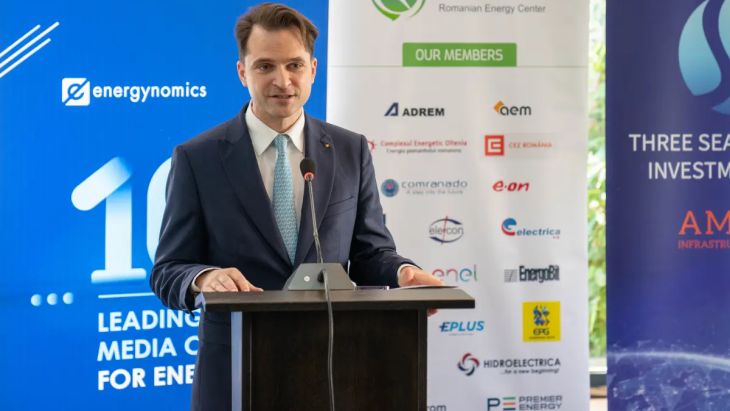We have to be careful when we assume targets in the environmental area, because there is a fine balance, and we don’t want to put Romania’s competitiveness in difficulty, declared, on Tuesday, the Minister of Energy, Sebastian Burduja, regarding the new version of the National Integrated Plan in the field of Energy and Climate Change (PNIESC).
“As you know, it is a fine balance between assuming extremely ambitious targets in the environmental area and putting Romania’s competitiveness in difficulty. We also saw in the last Draghi Report that, at the European level, the continent’s competitiveness is in difficulty at the moment. So we have to be careful. On the one hand, we certainly want to have a clean environment, to leave it to future generations, but I continue to argue that, at least in the energy sector, we have security, competitiveness and only in the third “green” place”, said Burduja, on the sidelines of a specialized forum on cyber security.
On the other hand, when asked about the price of energy on the balancing market, which exceeded 100,000 lei/MWh, the relevant minister specified that it was about “an algorithm error”, according to Agerpres.
“I talked to Mr. Ivan, from the National Energy Dispatcher, who deals with the balancing market, and he explained to me that it is basically an algorithm error. That price has not been paid and will not be paid. So, it is pure and simply a wrong formula. It’s a new platform that they implemented this summer. It’s not a real price, it’s a technical issue,” explained the official.
The Ministry of Energy announced, on Tuesday, in a press release, that it published the second updated version of PNIESC, a document that includes 89 policies and additional measures aimed at increasing the share of renewable energy sources (SRE), significantly reducing emissions of greenhouse gases (GHG) and the implementation of innovative solutions in all economic sectors.
According to the cited source, Romania aims to achieve climate neutrality before 2045, thus surpassing the previous deadline set for 2050, and by 2030 to ensure 38% of the gross final energy consumption from renewable sources.
Among the key objectives of the plan are the reduction of net GHG emissions by 85% by 2030, compared to the level of 1990, and the achievement of climate neutrality before 2045, thus ahead of the previous deadline set for the year 2050.
The revised plan, which will be sent to the European Commission, includes measures to reduce emissions in key sectors such as energy, transport, housing and industry, and aims to implement advanced technological solutions such as the use of renewable hydrogen and energy efficiency
